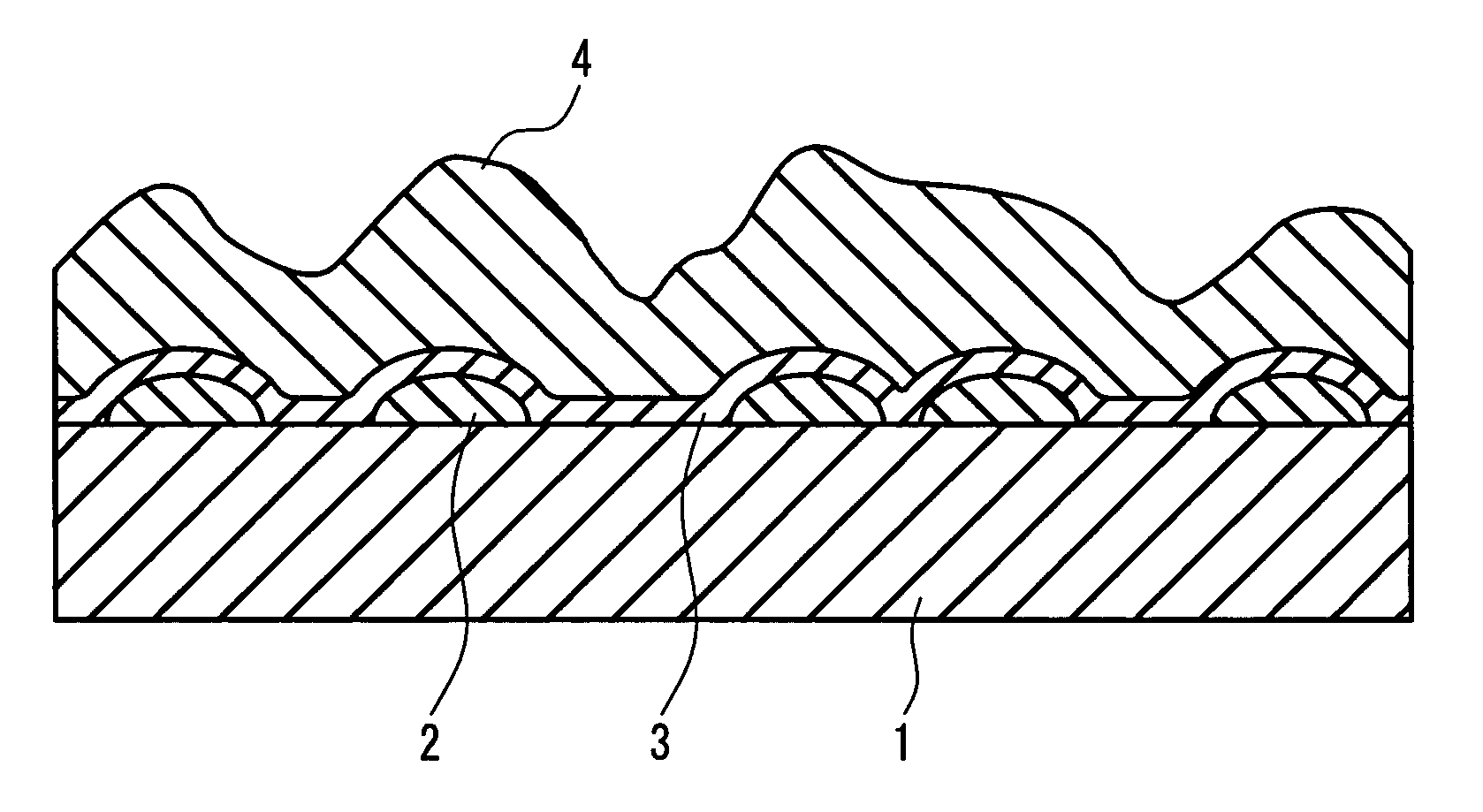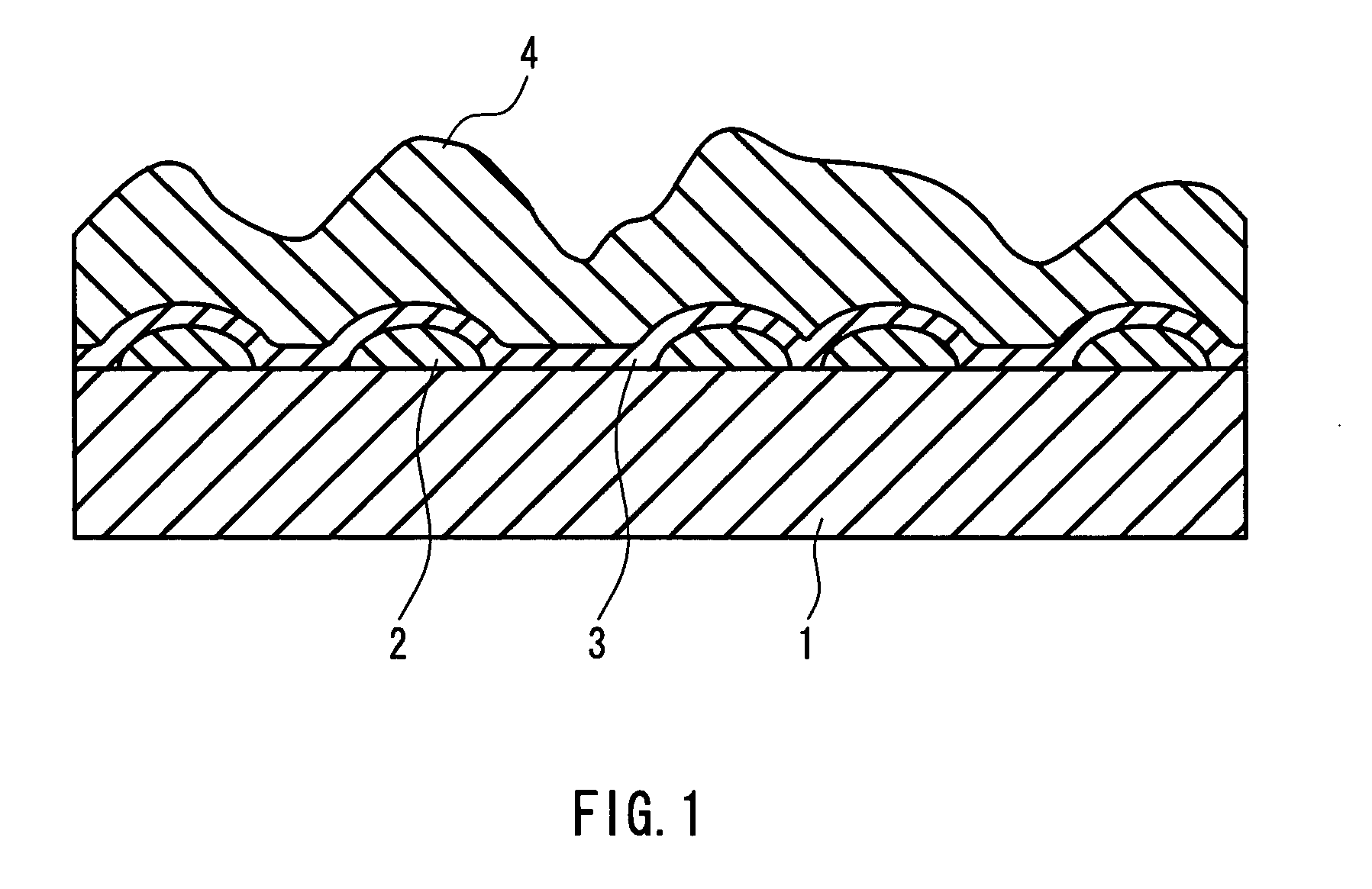Glass substrate and method of manufacturing the same
a technology of glass substrate and glass layer, which is applied in the field of glass substrate, can solve the problems of reducing the conductivity reducing the adhesion and high reflectance, and achieves the effect of easy manufacturing of such a glass substrate, light trapping, and large surface roughness of the transparent conductive film
- Summary
- Abstract
- Description
- Claims
- Application Information
AI Technical Summary
Benefits of technology
Problems solved by technology
Method used
Image
Examples
example 1
[0053]Various thin films were formed using an on-line CVD method with the following setting. Specifically, 98 volume % of nitrogen and 2 volume % of hydrogen were supplied to the interior space of a float bath so that the interior space of the float bath is kept at a slightly higher pressure than that outside the bath. With the interior of the bath being kept to be a non-oxidizing atmosphere, a mixed source gas composed of tin tetrachloride (vapor), oxygen, nitrogen, and helium was supplied from a first coater located on the most upstream side to form a group of separated and isolated metal oxide particles containing tin oxide as the main component on a glass ribbon. Table 1 below sets forth the concentration of tin tetrachloride and the concentration of oxidizing material of the mixed source gas supplied from the first coater, as well as the gas flow rate for blowing the mixed source gas against the glass ribbon and the surface temperature of the glass ribbon at that time.
[0054]Sub...
PUM
| Property | Measurement | Unit |
|---|---|---|
| height | aaaaa | aaaaa |
| refractive index | aaaaa | aaaaa |
| refractive index | aaaaa | aaaaa |
Abstract
Description
Claims
Application Information
 Login to View More
Login to View More - R&D
- Intellectual Property
- Life Sciences
- Materials
- Tech Scout
- Unparalleled Data Quality
- Higher Quality Content
- 60% Fewer Hallucinations
Browse by: Latest US Patents, China's latest patents, Technical Efficacy Thesaurus, Application Domain, Technology Topic, Popular Technical Reports.
© 2025 PatSnap. All rights reserved.Legal|Privacy policy|Modern Slavery Act Transparency Statement|Sitemap|About US| Contact US: help@patsnap.com



